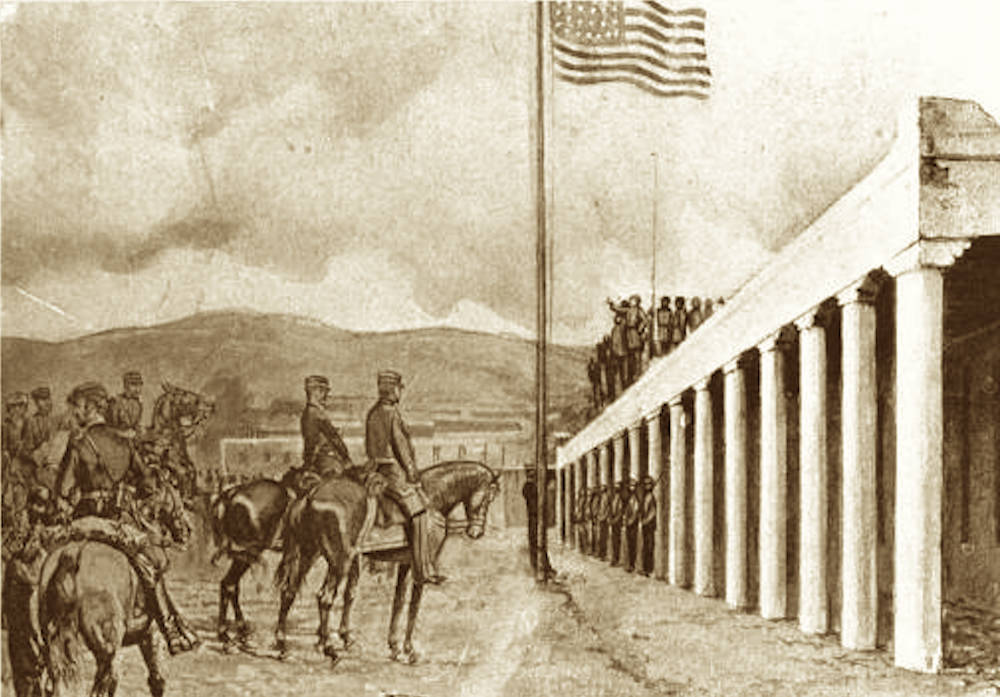
Brigadier General Stephen Kearny and the U.S. Army of the West at Santa Fe, New Mexico, on August 19, 1846. Courtesy of History and Government of New Mexico by John H. Vaughan (1921).
Massachusetts and Virginia became American states after colonists repelled an imperial power. But the area now known as New Mexico joined the Union when it was conquered by the U.S. Army. The U.S. incorporated the land after the Treaty of Guadalupe Hidalgo, but its inhabitants weren’t automatically U.S. citizens; their status became the subject of negotiations and controversies over who could remain and who would be considered American. What did this history portend for Hispanos, Native Americans, and other New Mexicans? And how did the conquest of New Mexico and its subsequent territorial status shape the state constitution and the legal, cultural, and political customs New Mexicans live under today? New Mexico Historical Review editor Durwood Ball, University of Colorado historian and Center of the American West faculty director Patricia Limerick, and Pablo Mitchell, Oberlin College historian and author of Coyote Nation, examine the enduring legacy of the state’s origin story.
The Takeaway
Is New Mexico an ‘Incomplete Project’ of the United States?
Brought Into the Union Through Conquest, the State’s Untidy Identity and History of Autonomy Persist
New Mexico has an uneasy and complicated history. After joining the United States by conquest—through the Treaty of Guadalupe Hidalgo that ended the Mexican-American War of 1846-1848—its residents didn’t automatically …








